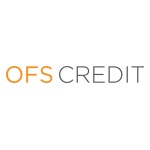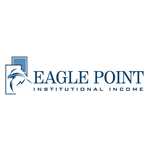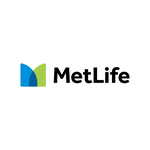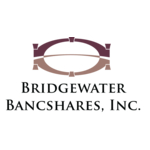Below are press releases from company’s with preferred stock and/or baby bonds outstanding–or just news of general interest. News will be rather slow until the the end of the quarter and start of earnings season in the next couple weeks.

OFS Credit Company Declares Series F Preferred Stock Distributions
Saratoga Investment Corp. Announces Fiscal Second Quarter 2025 Financial Results

Eagle Point Institutional Income Fund Announces Offering of Preferred Shares
Newtek Bank, N.A. Achieves 11.7% Deposit Growth in the Third Quarter 2024
CenterPoint Energy, Inc. to Host Webcast of Third Quarter 2024 Earnings Conference Call
Runway Growth Finance Corp. Provides Third Quarter 2024 Portfolio Update

MetLife Declares Fourth Quarter 2024 Common Stock Dividend


To add to the rich pricing, volume has dried up for most of my holdings and others that I follow. Issues that used to trade tens or hundreds of thousands of shares per day now trade very sparsely or sometimes not at all. So it kind of forces you to be a holder, unless of course you want to lose a quick 5% by putting in a market sell order.
Rocky, You got me to looking. A couple I hold I just looked at and I see what you mean. Of course the price I bought them at I am getting good returns and I have been saying I wouldn’t sell. But the question comes up are buyers thinking pricing is too rich now especially with the uncertainty that rates are not going to drop as much or as fast as people thought for the rest of this year? The other thing to look at is the ask/ sell orders volume compared to the bid. I took one above BWBBP and its 1 to 5 for bid and ask.
One last thought. It’s the middle of Oct and an election year. Whatever happens we may be entering tax loss selling season early this year.
Even barrons (perennial cheerleaders) is warning about rich pricing in bond land.
The big yields available for holding cash are fading, and investors are rushing to buy riskier options, including junk bonds. They may come to regret it.
Since 2022, the Federal Reserve provided U.S. investors with a guaranteed way to earn interest on their cash reserves. High interest rates meant they could sit back, relax, and earn an easy over 5% on short-term instruments.
No longer. The world’s largest central bank cut interest rates by a half percentage point last month and investors searching for 5%-plus returns are turning to the riskier parts of the market, including high-yield bonds and funds. Also referred to as junk bonds, these are lower-quality investments, issued by companies with credit ratings below BBB- that suggest a greater chance of default than more credit-worthy investment-grade bonds but offer higher yields.
Investors are placing returns above risks right now. Flows into junk bond funds reached an 11-week high, pulling in $4.2 billion, according to the latest data from EPFR for the week ending Oct. 2. High-yield funds have attracted inflows for seven straight weeks, with U.S. funds drawing the majority of cash in the latest week at $3 billion.
Those investors aren’t getting much of a premium over a comparable Treasury, however. Junk bonds offered only 289 basis points or 2.89 percentage points, more in yield over U.S. government debt at the end of last week, a 17-year low. That means investors are willing to take a risk on corporations defaulting on their debt for a small amount of excess return over Treasuries.
The current spread, as of Wednesday’s close at 294 basis points, remains around the lows seen back in 2007.
“People with their models [are] saying the spreads are narrower than they should be, but that’s really not the main consideration right now,” said Marty Fridson, CEO of FridsonVision High Yield Strategy. “[There’s] pressure to get more yield into the portfolio.”
The decision to chase yield isn’t irrational. It comes as the Federal Reserve has loosened monetary policy, which makes it cheaper to borrow money, even though the economy remains strong. The U.S. added 100,000 more jobs in September than expected, the services sector is booming, and recession concerns have mostly faded. Thursday’s consumer price index print shows inflation is alive and well.
A Fed that has eased and is looking to ease further in a strong economy has made “investors confident in going out the risk spectrum,” Vanguard’s global head of credit Chris Alwine says.
More rate cuts could also benefit investors through higher prices on their existing junk bonds by pushing yields lower. (Yield and bonds move inverse). In short, investors see little reason to stick with the certainty of a 4% Treasury yield when they can get 6.9% in the average junk bond now and profit from further drops in interest rates.
But there’s one problem with that assumption: It assumes there won’t be an economic hiccup along the way. If the U.S. slides into recession, geopolitical risks increase, an unresolved election, or even a reaccelerating economy that prevents the Fed from cutting rates, “then there’s no value cushion, and you get underperformance…to a larger magnitude,” explains Alwine, who prefers emerging-market debt and real estate over lower quality high-yield U.S. debt.
It’s hard to think about the risks when high yield has performed as well as it has: The SPDR Bloomberg High Yield Bond
JNK
-0.01%
exchange-traded fund and iShares iBoxx $ High Yield Corporate Bond ETF
HYG
-0.05%
are up more than 7% this year, while the iShares Core U.S. Aggregate Bond ETF AGG-0.06%, offering broad exposure to higher quality investment-grade debt, is up 3%. The iShares 20+ Year Treasury Bond ETF
TLT-0.39% which focuses on long-term Treasury bonds is down 2%, while the iShares 7-10 Year Treasury Bond ETF IEF-0.01%has returned 2%.
But there’s no telling when the table will flip. Investors can stay overweight credit but should consider skewing higher quality than lower, or just stick with intermediate Treasuries in the two- to five-year range.
https://www.barrons.com/articles/yield-rates-junk-bonds-treasury-risks-9b708715?mod=RTA
If you prefer, Funny I was just looking on Fido at bonds. Found an under the radar west coast REIT with a bond due Sept 2030 BBB- make whole at about 5.8% YTM didn’t pull the trigger.
I’m always buying and selling too Charles… . All depends on account. Just HATE when I ignore the anecdotal evidence. We get clear signals and still plow ahead.
Like McReit pricing. Most over par!!
IUP was looking at AAT bonds but it’s early and a Friday going into the weekend.